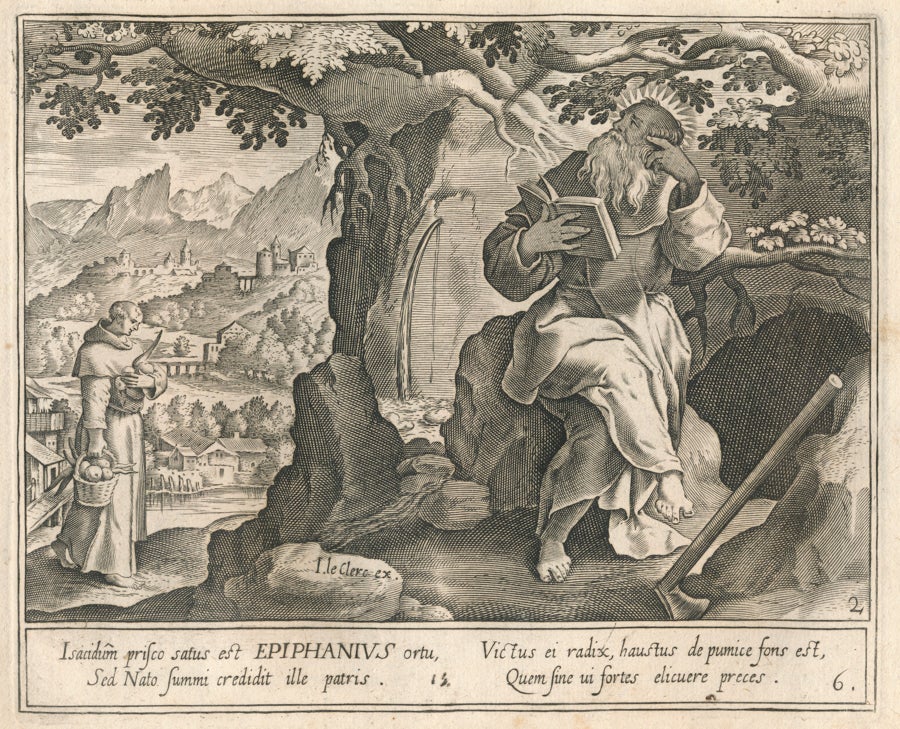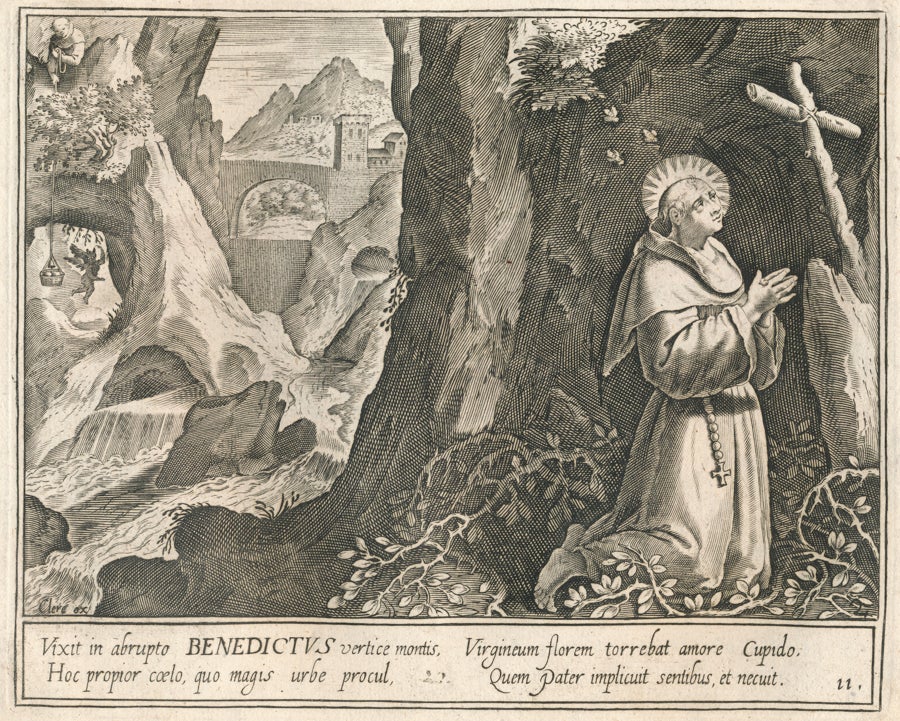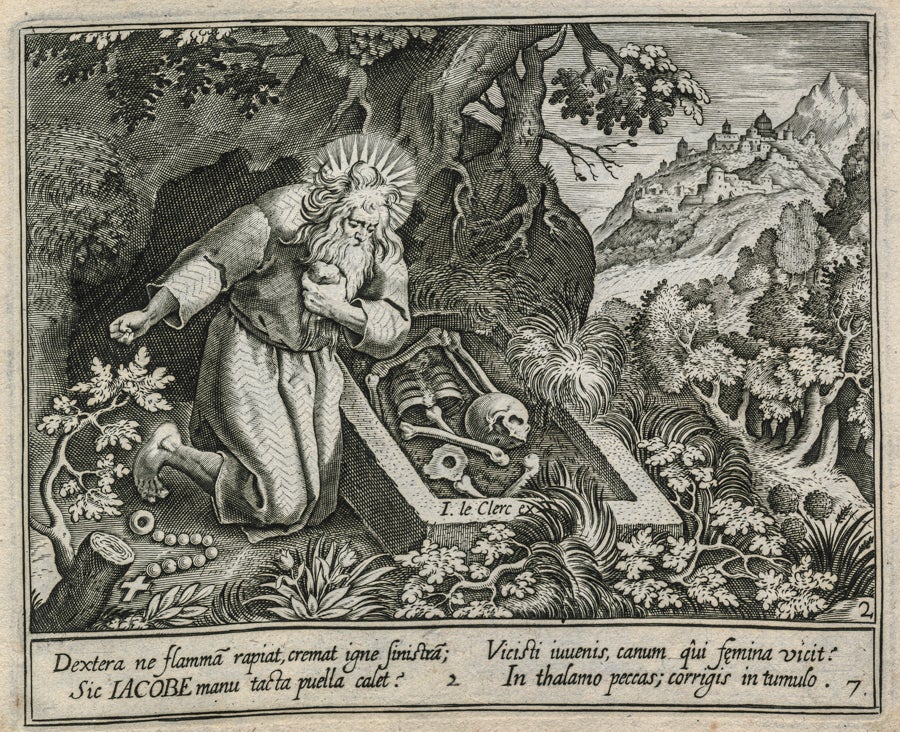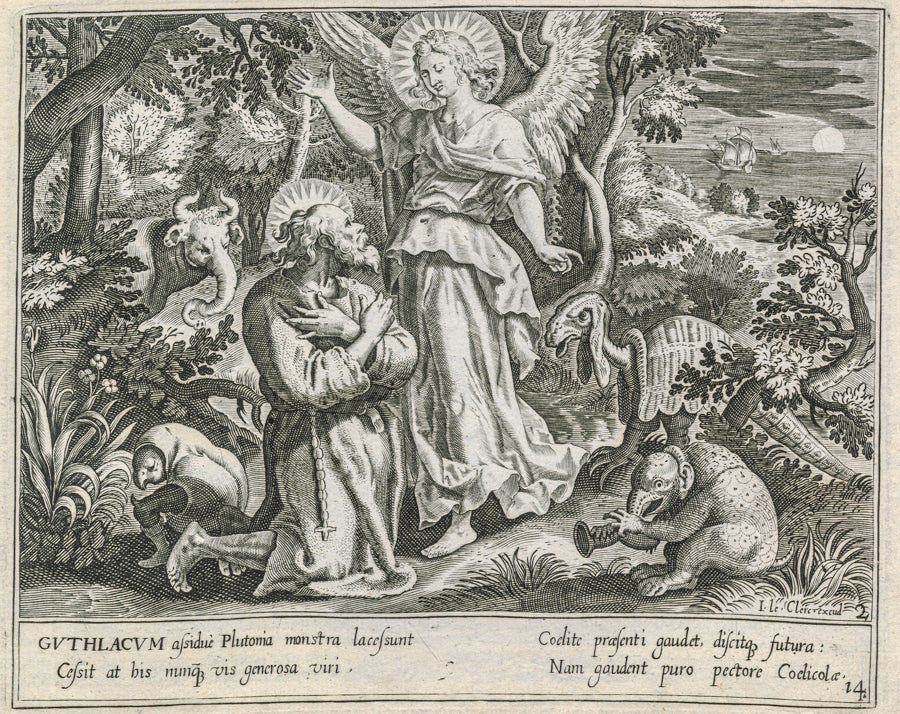One of the works used in our most recent exhibition, Demons, Death and the Damned: The Underworld of Woodstock Library, is a beautiful exploration of the hermetic life of the early saints, titled Sylvae Sacrae. The collection of engravings, originally published in 1594 by the Flemish printmaker Marten de Vos, depicts the early ascetic saints of the church each in his hermitage. For our exhibition we chose to showcase a print in which a hermit is shown contemplating skeletal remains, however, most are not nearly so morbid, but are beautifully rendered scenes of lone individuals in acts of prayerful supplication, pious repose, or zealous action.
The Sylvae Sacrae was part of a movement within the counter reformation to defend and uphold the contemplative life of the religious. As art history scholar Leopoldine van Hogendorp Prosperetti puts it, “the case to be made in each single print was to show that solitudo as a form of life promises to turn a wilderness into a flowery meadow, a squalid hut into an attractive hermitage, and the uncouth anchorite into an angel of the desert.”*
De Vos wonderfully utilizes the foreground and background elements to juxtapose the pious life of the saint amongst the sylvan wilderness with the life of the city off in the distance. These depictions of quiet solitude maintain their power to this day in a world with less and less wilderness and more and more distraction.
Many of these scenes are rendered by De Vos as charged with the unreal and the fantastic, with demonic and divine figures often in visitation, as if by drawing away from humanity, the saints draw closer to the eternal.
Post by Adrian Vaagenes, Digital & Archival Services Librarian
* Leopoldine van Hogendorp Prosperetti, “Helenus and Dorotheus: Marten de Vos and the Desert Fathers,” in Imago Exegetica: Visual Images as Exegetical Instruments, 1400–1700, eds. Walter S. Melion, James Clifton, and Michel Weemans, Intersections: Interdisciplinary Studies in Early Modern Culture 33 (Leiden: Brill, 2014), 423–48.






